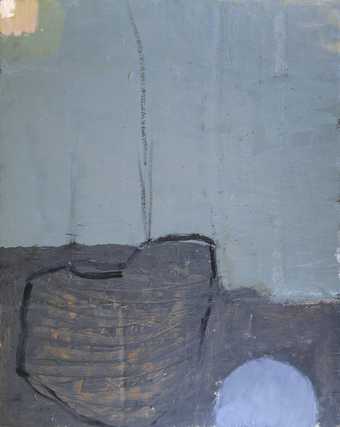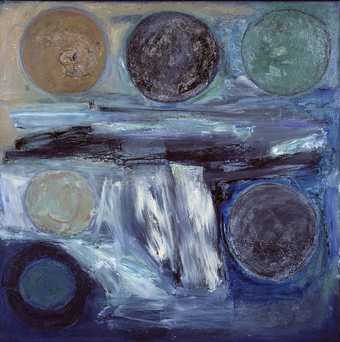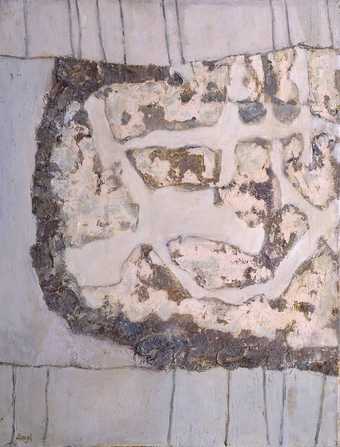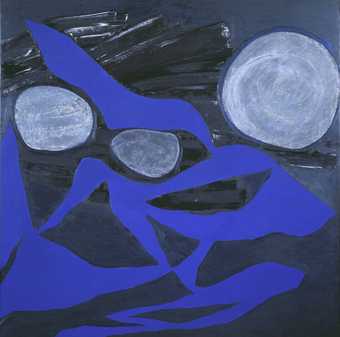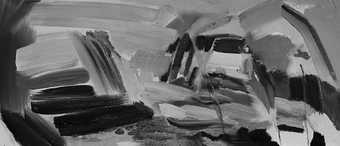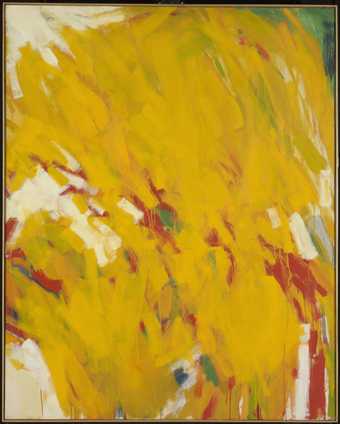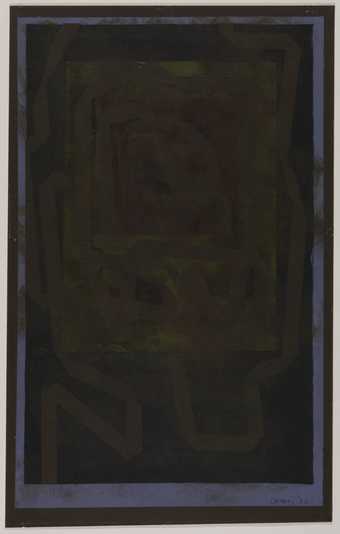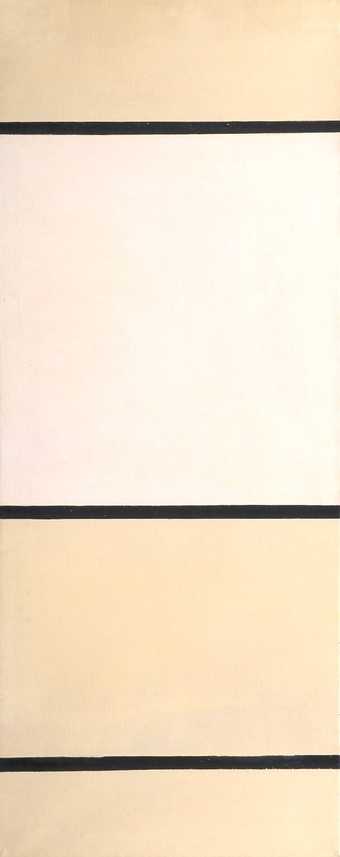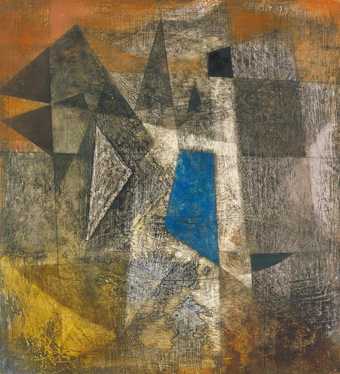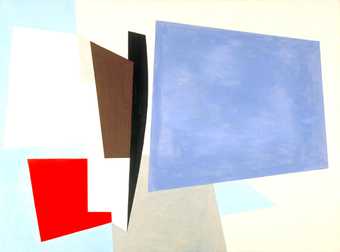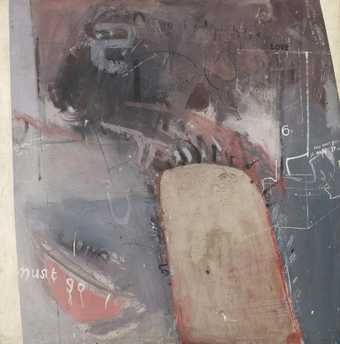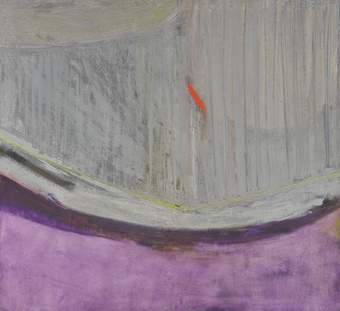
Not on display
- Artist
- Norman Adams 1927–2005
- Medium
- Oil paint on canvas
- Dimensions
- Support: 1270 × 1270 mm
- Collection
- Tate
- Acquisition
- Presented by the Trustees of the Chantrey Bequest 1969
- Reference
- T01127
Catalogue entry
Norman Adams b. 1927
T01127 RAINBOW PAINTING (1) 1966
Inscribed on reverse ‘(1) FIRST RAINBOW PAINTING (EASTER SERIES) 1966 N.A.’
Canvas, 50×50 (127×127).
Chantrey Purchase from the artist 1969.
Exh: Royal Academy, 1969 (1112).
Repr: Royal Academy Illustrated, 1969, p. 1.
Three other ‘Rainbow’ paintings were exhibited at the Royal Academy in the same year (Nos. 1129, 1140 and 1141).
The artist wrote (27 January 1970): 'There are many more than the four Rainbow paintings. It is difficult to say how many there will be in the end as I am still painting them. There must be by now about 15. It can hardly be considered, in the strictest sense, a series. It is a very open ended situation and the recent ones have more to do with a particular place and I call them “the sound of Scarp”, though in most cases a rainbow features dominantly. The (Easter series) part of the original title was because those particular paintings were begun at Easter and were inspired by the season, which always resurrects, usually dominant. Christian feelings in me. I hesitate to call myself a Christian, though I am certainly nothing else, especially I am not either atheist or agnostic.
'The exact date of the picture is March–April, 1966.
'The symbolism is most difficult to explain, indeed I don't really think in terms of symbols at all. The idea began, as my ideas always do, as the result of a purely visual experience. The symbolic (if one must use the word, and I can think of no other) significance grew with working at it. As a romantic artist I suppose my concern is with the usual problems of life-death, body-soul, tangible-intangible, time-space etc. The translucent and ephemeral quality of the rainbow contrasts powerfully with the weight of the sea. Yet both rainbow and sea are complete entities—independent yet integrally related—like the body and the soul.
'In a sense, I suppose a work of art will mean as much as people will allow it (or are ready) for it to mean.
'I am deeply moved by nature, and all my work is the result of finding myself at one with nature at a particular time. My work is about light, space and probably most of all time. A particular place (situation) brings me vividly face to face with these elements and then I can only work.
'I spend a lot of my time by the sea these days. I have a small studio on Scarp (a very small island in the Outer-Hebrides). The time, and the drawings and water-colours that I make out there have the most significant influence on my paintings.
‘My favourite artist (indeed my favourite man) has always been William Blake, and he, of all people, has had most influence on me (except in his opinion of nature, and I don't believe him when he says “nature always dried up the imagination in him”. He was a very stubborn man and was occasionally guilty of allowing his theories to prevail over his feelings.) I have no theories, only prejudices.’
Published in:
The Tate Gallery 1968-70, London 1970
Explore
- abstraction(8,615)
-
- from recognisable sources(3,634)
-
- landscape(1,191)
You might like
-
Roger Hilton Grey Day by the Sea, February 1960
1960 -
Ceri Richards Circular Bases
1961 -
John Wells Painting
1962 -
Prunella Clough Rockery, 1963
1962–3 -
Ceri Richards La Cathédrale Engloutie (Arabesque 3)
1961 -
Ivon Hitchens October Painting, Yellow and Blue
1963 -
Patrick Heron Horizontal Stripe Painting : November 1957 - January 1958
1957–8 -
Richard Smith Painting
1958 -
Robyn Denny Painting
1962 -
Anthony Hill Painting 55-56
1955–6 -
Ivon Hitchens Study for the Mural Painting at Cecil Sharp House, London
c.1950 -
John Wells Painting
1957 -
John Wells Painting
1956 -
David Hockney The Third Love Painting
1960 -
Anthony Benjamin Poem of the Ocean II
1960

